Sustainability is no longer just a buzzword; it’s a global priority. From industries shifting towards greener practices to consumers choosing eco-friendly products, the movement toward sustainability is reshaping how we think about manufacturing, consumption, and responsibility. In the field of prosthetics, this transformation is equally vital.
Traditional prosthetic limbs, while advancing in functionality and design, often rely on materials and production processes that have a significant environmental footprint. As awareness grows, so does the demand for prosthetics that balance performance with sustainability. This shift not only benefits the planet but also aligns with the values of users who want their choices to reflect their commitment to a greener future.
The Environmental Impact of Traditional Prosthetics
Before delving into sustainable alternatives, it’s essential to understand the environmental impact of conventional prosthetic production. The materials and methods commonly used in prosthetics often rely on energy-intensive processes and non-renewable resources.
Materials and Manufacturing
Prosthetics are typically made from materials like aluminum, titanium, and carbon fiber, chosen for their durability, strength, and lightweight properties. However, the extraction and processing of these materials are resource-heavy, contributing to greenhouse gas emissions and environmental degradation.
Additionally, plastic components and synthetic liners, essential for comfort and fit, are derived from fossil fuels and contribute to long-term waste. Many of these materials are not biodegradable, leading to challenges in disposal when prosthetics reach the end of their lifespan.
For businesses, addressing this impact starts with reevaluating material sourcing and manufacturing practices. Exploring alternatives, such as recycled metals or bio-based polymers, can significantly reduce the carbon footprint of prosthetic production.
The Problem of Waste
Prosthetic limbs often require regular maintenance, repairs, and eventual replacement, generating waste over time. In many cases, outdated or damaged prosthetic components are discarded, adding to landfill accumulation.
Businesses can mitigate this waste by implementing take-back programs that recycle or repurpose old prosthetic parts. Educating users on how to dispose of their devices responsibly ensures that businesses and consumers work together toward a common goal of reducing waste.
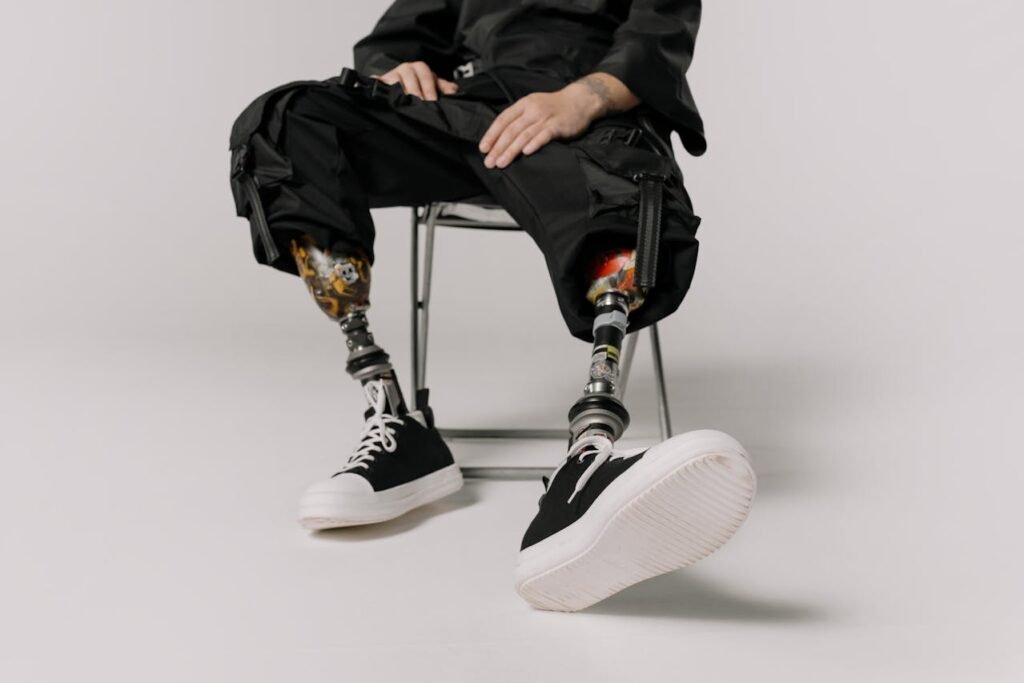
Resource-Intensive Materials
Traditional prosthetics rely heavily on non-renewable resources, including metals like titanium and aluminum, and synthetic materials such as carbon fiber and plastics.
These materials are chosen for their strength, lightness, and resistance to wear, but their production processes are energy-intensive and environmentally taxing. For instance, mining and refining titanium generate significant carbon emissions and require large amounts of water and energy.
To address this, businesses can explore alternatives like recycled metals or composites that combine natural fibers with biodegradable resins. For example, recycled aluminum maintains its strength and durability while significantly reducing the environmental impact compared to newly mined materials.
Investing in partnerships with suppliers who prioritize sustainable sourcing ensures that eco-friendly options are integrated into production without compromising quality.
High Energy Consumption in Manufacturing
The manufacturing of prosthetics, particularly advanced models with intricate designs, often involves processes like machining, molding, and heat treatment.
These techniques consume considerable energy, much of which is derived from non-renewable sources. This reliance on fossil fuels not only increases the carbon footprint of each prosthetic but also contributes to broader environmental challenges such as climate change.
Shifting to energy-efficient manufacturing practices is a strategic way for businesses to address this issue. For example, adopting renewable energy sources, such as solar or wind power, to run production facilities can reduce dependency on fossil fuels.
Additionally, implementing energy-efficient machinery and optimizing production workflows can lower energy consumption while maintaining output quality. Businesses that take these steps can highlight their commitment to sustainability, appealing to eco-conscious consumers and stakeholders.
Waste Generation Across the Lifecycle
From production to disposal, prosthetics generate waste at multiple stages of their lifecycle. During manufacturing, material offcuts, defective parts, and byproducts often end up as waste, contributing to landfill accumulation.
At the end of a prosthetic’s usable life, disposal poses another challenge, as many components are not biodegradable and cannot be easily recycled.

To tackle this, businesses can adopt a circular economy approach, designing prosthetics with recyclability in mind. For instance, using modular designs that allow individual parts to be replaced or upgraded instead of discarding the entire device can significantly reduce waste.
Establishing take-back programs where users can return old prosthetics for recycling or refurbishment not only minimizes environmental impact but also builds trust and loyalty among customers.
Hidden Environmental Costs
Beyond the direct impacts of materials and manufacturing, traditional prosthetics have hidden environmental costs, such as the transportation of raw materials and finished products.
The global nature of supply chains often means that materials and components travel long distances before reaching the end user, contributing to emissions from shipping and logistics.
Businesses can mitigate these hidden costs by localizing their supply chains wherever possible. Partnering with regional suppliers reduces transportation emissions and supports local economies.
Additionally, adopting digital design and production technologies, such as 3D printing, enables on-demand manufacturing closer to the point of use, further decreasing the environmental footprint.
Innovations in Sustainable Prosthetic Design
The growing demand for eco-friendly prosthetics has spurred innovation in both materials and design. These advancements aim to deliver high-performance devices while prioritizing environmental responsibility.
Biodegradable and Renewable Materials
One of the most exciting developments in sustainable prosthetics is the use of biodegradable materials. For example, bio-based polymers derived from plants, such as corn or sugarcane, can replace traditional plastics in prosthetic liners and components. These materials decompose naturally, reducing their environmental impact.
Similarly, the use of bamboo, a fast-growing and renewable resource, has shown promise in creating durable yet eco-friendly prosthetic components. Combined with recycled metals or composites, these materials provide a viable alternative without compromising performance.
For businesses, investing in research and development of biodegradable materials offers a competitive edge while aligning with sustainability goals. Highlighting these materials in product descriptions or marketing campaigns demonstrates a commitment to innovation and environmental responsibility.
Modular and Repairable Designs
Another approach to sustainability is designing prosthetics that are modular and repairable. Modular designs allow users to replace individual components rather than discarding the entire device, extending the prosthetic’s lifespan and reducing waste.
For example, a lower-limb prosthetic with an interchangeable foot or socket enables users to upgrade or repair specific parts without the need for a complete replacement. Businesses that embrace this philosophy can offer users long-term cost savings while contributing to sustainability.
Circular Economy in Prosthetics
The concept of a circular economy is gaining traction in various industries, including prosthetic manufacturing. Unlike the traditional linear model of “make, use, and dispose,” a circular economy focuses on creating systems where materials and components are reused, refurbished, or recycled to minimize waste and resource extraction.
Recycling and Repurposing Prosthetic Components
One of the most actionable steps toward sustainability in prosthetics is implementing recycling programs. By recovering valuable materials from outdated or damaged prosthetics, manufacturers can reduce the need for virgin resources.
Metals like titanium and aluminum can be melted down and reused, while certain plastics can be reprocessed into new components.
For businesses, establishing take-back initiatives for old prosthetics not only reduces environmental impact but also strengthens relationships with users. Offering incentives, such as discounts on new devices for returning old ones, encourages participation and reinforces a commitment to sustainability.
Beyond recycling, some organizations repurpose prosthetics for those in need, especially in underserved communities. Businesses that collaborate with nonprofits to refurbish and donate used devices can simultaneously address environmental and social goals.
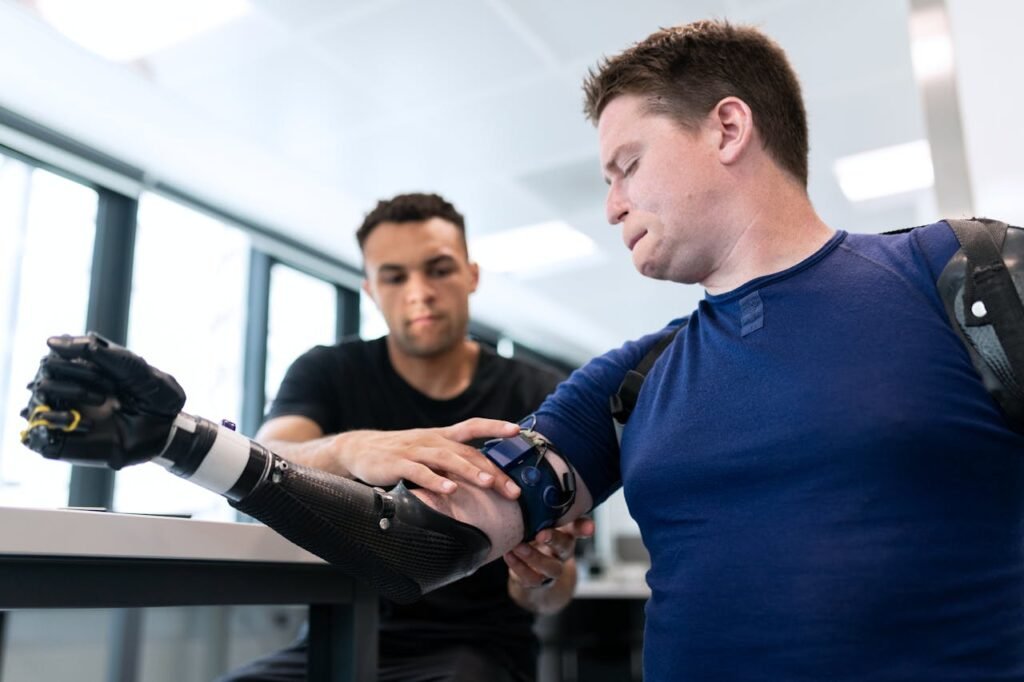
Designing for Disassembly
Designing prosthetics with end-of-life considerations in mind is another key element of the circular economy. Devices should be easy to disassemble, allowing individual parts to be replaced, repaired, or recycled without damaging the entire structure.
For example, using standardized connectors and easily separable materials makes it simpler to recover valuable components. Businesses that prioritize disassembly-friendly designs can market their products as forward-thinking and environmentally conscious, appealing to eco-minded users.
The Role of Technology in Sustainable Prosthetics
Technology plays a critical role in advancing sustainable practices within the prosthetics industry. From 3D printing to smart design software, innovations are transforming how prosthetics are developed and produced.
3D Printing for Resource Efficiency
3D printing, or additive manufacturing, has emerged as a game-changer in prosthetic production. This technology allows manufacturers to create highly customized devices with minimal material waste.
Unlike traditional manufacturing methods, which often involve cutting and shaping materials (and discarding excess), 3D printing builds components layer by layer, using only the required amount of material.
Moreover, 3D printing enables the use of alternative, eco-friendly materials, such as recycled plastics or biodegradable polymers. This combination of precision and sustainability makes it an ideal solution for creating cost-effective, environmentally friendly prosthetics.
For businesses, adopting 3D printing can also reduce production timelines and costs, enabling quicker delivery of customized solutions to users. Showcasing the environmental benefits of 3D-printed prosthetics in marketing efforts helps attract eco-conscious consumers.
Smart Design for Optimized Material Use
Advanced design software allows manufacturers to optimize the structure of prosthetic components, reducing material use without sacrificing strength or performance.
For instance, lattice structures—lightweight, yet strong geometric designs—can be incorporated into prosthetic limbs to achieve the same durability with less material.
Businesses that leverage such smart design techniques can reduce their environmental footprint while maintaining high standards of quality and functionality. Sharing these innovations with users demonstrates a commitment to both sustainability and cutting-edge technology.
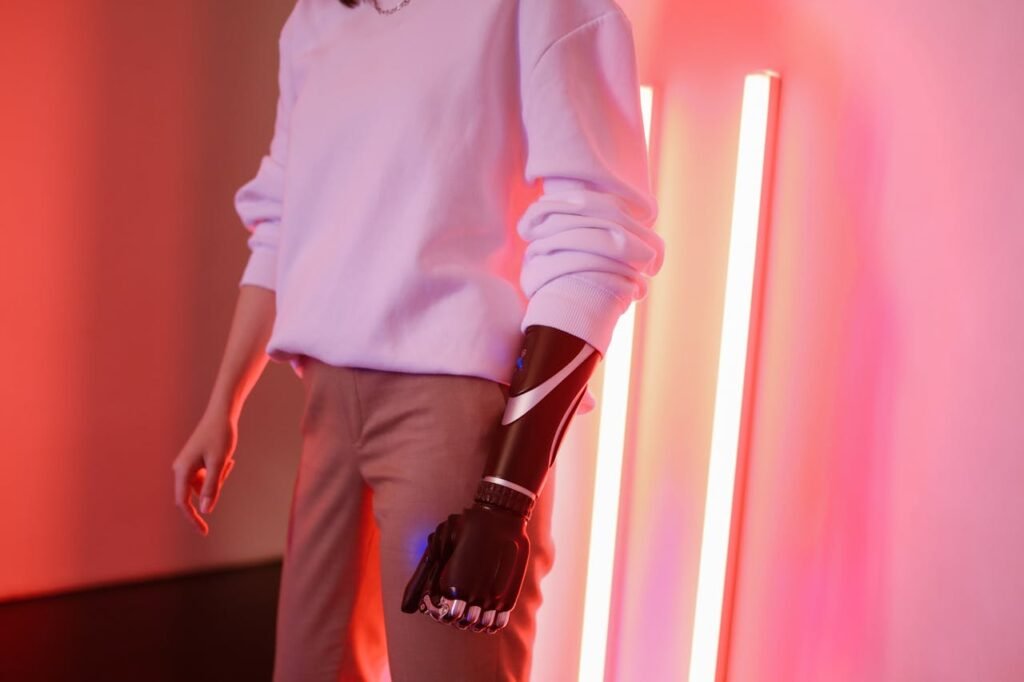
Educating Users About Sustainable Choices
Sustainability in prosthetics is not solely the responsibility of manufacturers; users also play a critical role in making eco-friendly choices. Educating users about the environmental impact of their prosthetics and providing them with actionable steps for sustainability fosters a sense of shared responsibility.
Promoting Care and Maintenance
Proper care and maintenance can significantly extend the lifespan of a prosthetic, reducing the need for replacements and minimizing waste. Users should be educated on cleaning techniques, regular inspections, and minor repairs they can perform at home.
For businesses, offering maintenance workshops or providing detailed care guides with each prosthetic reinforces the importance of sustainability. Additionally, creating user-friendly repair kits with essential tools and instructions empowers users to address minor issues independently.
Encouraging Eco-Friendly Disposal
When a prosthetic reaches the end of its usable life, responsible disposal is essential. Businesses can guide users on how to recycle or donate their old devices, ensuring valuable materials are recovered and reused.
For example, including information on local recycling programs or partnering with organizations that refurbish and distribute used prosthetics makes the disposal process seamless for users. Offering collection services for old devices further simplifies the process and reinforces the business’s commitment to sustainability.
Sustainable Partnerships: Collaborating for a Greener Future
Creating eco-friendly prosthetic options requires a collaborative effort that involves businesses, researchers, governments, and users. Partnerships and joint initiatives amplify the impact of sustainable practices, ensuring that advancements benefit both the industry and the planet.
Partnering with Material Innovators
Innovative materials are at the heart of sustainable prosthetic design. By collaborating with companies specializing in eco-friendly materials, prosthetic manufacturers can access cutting-edge solutions that reduce environmental impact. For example, working with suppliers of bio-based polymers or recycled metals ensures that sustainable alternatives are integrated into production processes.
Businesses can also join industry groups or research consortia dedicated to developing and testing new materials. These collaborations not only accelerate innovation but also create opportunities for manufacturers to share knowledge and resources, making eco-friendly materials more accessible across the industry.
Engaging with Nonprofits and Advocacy Groups
Nonprofits and advocacy organizations play a pivotal role in raising awareness about sustainability and driving initiatives that benefit underserved communities. Partnering with such groups allows businesses to expand their reach while contributing to environmental and social causes.
For instance, collaborating on programs that refurbish and donate used prosthetics aligns with sustainability goals while addressing global disparities in access to assistive devices.
These efforts not only enhance a company’s reputation but also create a positive impact on the lives of individuals who might otherwise lack access to quality prosthetics.
Supporting Research and Development
Investing in research and development (R&D) is essential for advancing sustainability in prosthetics. Businesses can fund or participate in studies that explore new materials, manufacturing techniques, and design innovations.
Supporting academic research or partnering with universities to develop eco-friendly solutions fosters a culture of continuous improvement.
By showcasing their involvement in R&D initiatives, businesses demonstrate a commitment to sustainability that resonates with users and stakeholders alike.
Sharing the results of these efforts—whether through publications, conferences, or social media—further highlights the company’s leadership in sustainable prosthetic development.
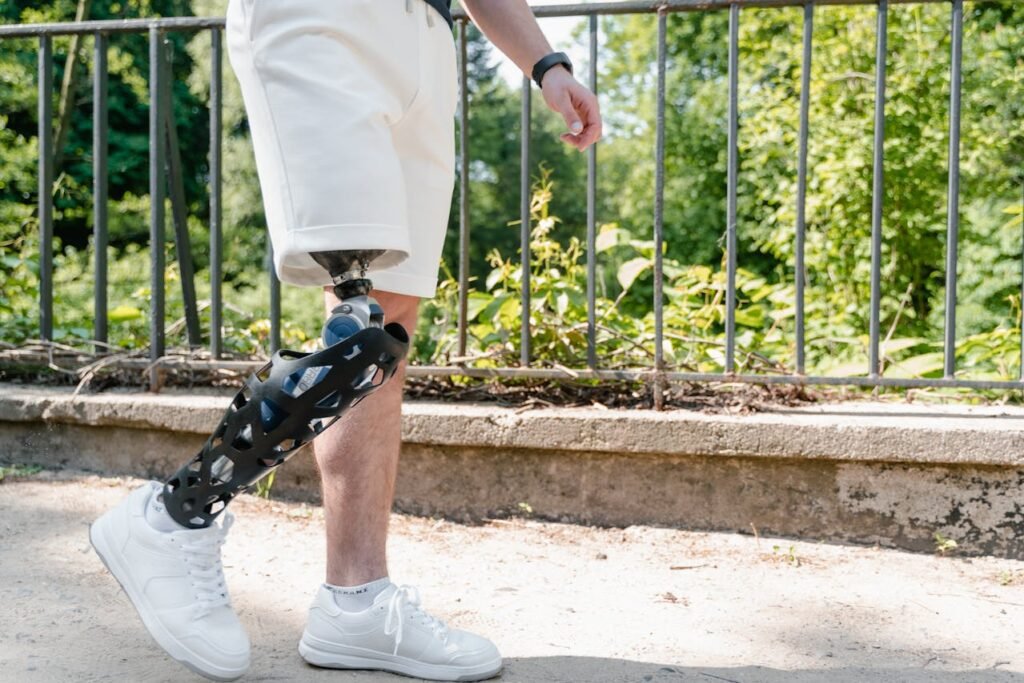
The Business Case for Sustainable Prosthetics
Adopting sustainable practices is not just an ethical choice; it also makes sound business sense. As consumer demand for environmentally friendly products grows, businesses that prioritize sustainability position themselves for long-term success.
Meeting Consumer Expectations
Today’s users are more environmentally conscious than ever, and their purchasing decisions often reflect their values. Offering sustainable prosthetic options appeals to this growing demographic, helping businesses differentiate themselves in a competitive market.
Highlighting the eco-friendly aspects of your products—such as the use of recycled materials, reduced waste, or energy-efficient production methods—creates a compelling value proposition. Transparent communication about sustainability efforts builds trust and fosters brand loyalty among users.
Reducing Costs Through Efficiency
Sustainability often goes hand-in-hand with efficiency. Practices such as reducing material waste, optimizing production processes, and using renewable energy sources can lower operational costs over time. For instance, implementing 3D printing not only minimizes waste but also reduces the need for extensive inventory, cutting storage expenses.
For businesses, showcasing these cost-saving measures as part of their sustainability story reinforces the practical benefits of going green. It also inspires confidence among investors and stakeholders who value environmentally responsible practices.
Strengthening Industry Leadership
As sustainability becomes a defining factor in many industries, businesses that take the lead in eco-friendly practices gain a competitive edge. Being recognized as a pioneer in sustainable prosthetics enhances a company’s reputation, attracting both users and partners who share similar values.
Participation in sustainability certifications, industry awards, or green initiatives further solidifies this leadership position. Businesses that actively contribute to shaping the future of sustainable prosthetics are more likely to influence industry standards and drive meaningful change.
A Call to Action for the Prosthetics Industry
As the demand for sustainability grows, the prosthetics industry faces a pivotal moment. The choices made today will shape the future of assistive technology, balancing innovation with environmental responsibility. Transitioning to sustainable practices isn’t just about adopting new materials or techniques—it’s about rethinking the entire lifecycle of prosthetic limbs, from design and production to usage and disposal.
Engaging Users in Sustainability
Users play a central role in driving the adoption of sustainable prosthetics. By educating and empowering them, businesses can create a ripple effect that amplifies the impact of their initiatives.
Encouraging users to prioritize eco-friendly options, participate in recycling programs, and care for their devices responsibly fosters a community-wide commitment to sustainability.
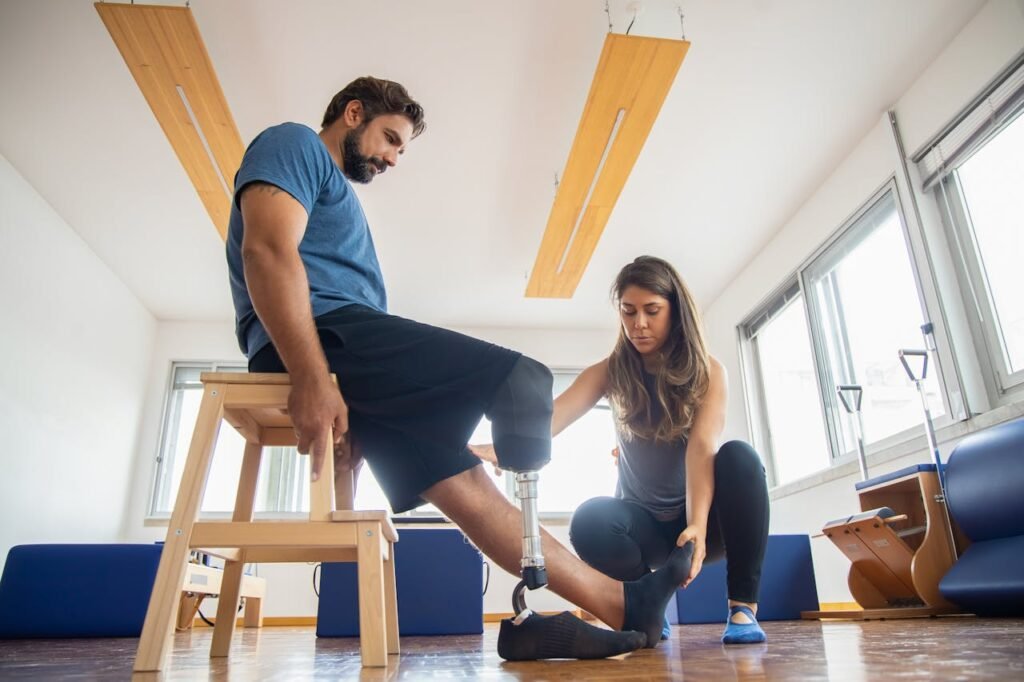
For example, businesses can host events or webinars that highlight the environmental benefits of sustainable prosthetics, offering practical tips for users to contribute to the cause.
Collaborating with environmental organizations or hosting campaigns that raise awareness about the environmental footprint of traditional prosthetics adds a layer of social responsibility to your brand identity.
Integrating Sustainability Into Business Models
Sustainability should be more than a feature—it should be embedded into the core of a business’s values and operations. For prosthetics manufacturers, this means reevaluating every aspect of their business model, from sourcing materials to marketing strategies.
For instance, committing to carbon-neutral production processes or transitioning to renewable energy sources can reduce the environmental impact of manufacturing.
Partnering with green suppliers ensures that sustainability is upheld throughout the supply chain. Offering repair and upgrade services rather than promoting a “buy new” mindset reinforces the principles of a circular economy.
Marketing efforts should also reflect this commitment, with campaigns that emphasize transparency, accountability, and the tangible impact of sustainable prosthetics.
Sharing data on reduced emissions, recycled materials used, or waste diverted from landfills helps users understand the real-world benefits of their choices.
Pioneering Industry-Wide Change
While individual efforts are impactful, the collective power of the industry is essential for meaningful change. Businesses should collaborate with competitors, researchers, and policymakers to establish standards and best practices for sustainable prosthetics.
Creating industry coalitions or joining existing initiatives focused on sustainability ensures that progress is accelerated. These groups can advocate for funding to support research, lobby for policies that promote green manufacturing, and share resources that benefit all stakeholders.
By working together, the industry can achieve goals that no single entity could accomplish alone.
Conclusion
Sustainable prosthetics are more than an innovation—they’re a necessity. As the world continues to confront the challenges of climate change and resource depletion, the prosthetics industry has a unique opportunity to lead by example.
By adopting eco-friendly materials, rethinking production processes, and fostering collaboration, businesses can create a future where prosthetics are not only transformative for users but also kind to the planet.
For users, choosing sustainable options represents a way to align their mobility needs with their environmental values. For businesses, committing to sustainability is an investment in innovation, reputation, and the health of the planet.
Together, these efforts pave the way for a new standard in prosthetic manufacturing—one that prioritizes performance, inclusivity, and responsibility in equal measure.



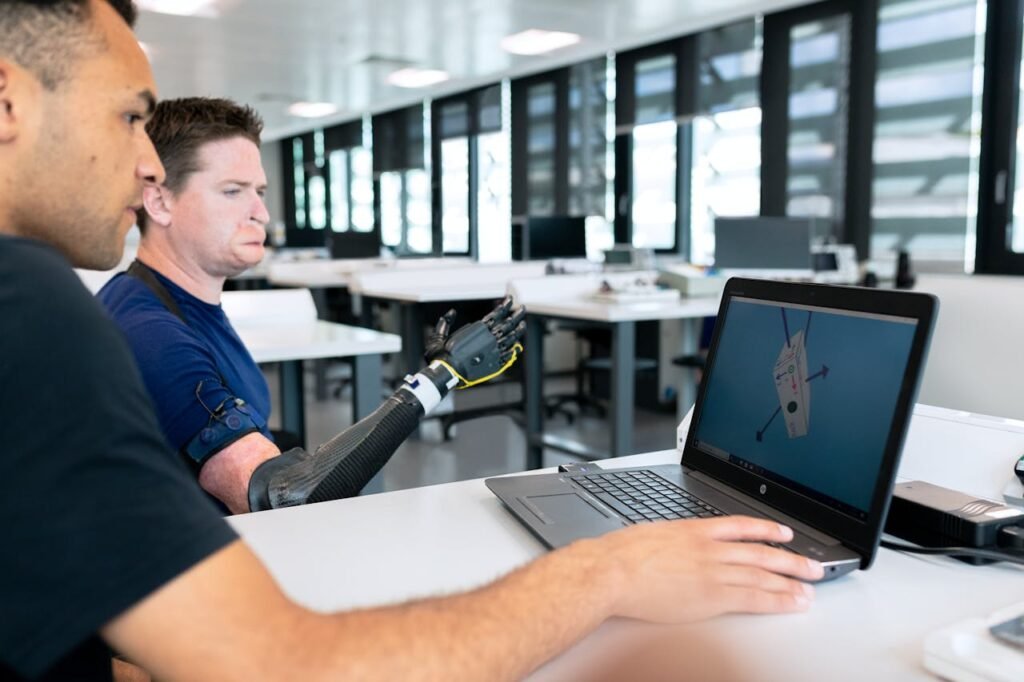
This is a truly inspiring read! Advancements in sustainable prosthetics are shaping a greener and more inclusive future. Thank you for shedding light on such an important innovation. https://saveplus.ae
It’s heartening to see sustainability becoming a real force for change even in fields like prosthetics, where innovation has long focused on function and fit. Now, there’s a growing recognition that how these life-changing devices are made matters too. Choosing materials and methods that are kinder to the planet doesn’t mean sacrificing quality; instead, it adds another layer of meaning for users who want their prosthetics to reflect not just their needs, but also their values. It’s a powerful step toward a future where care for people and the environment go hand in hand.